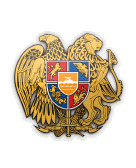IP Enforcement
IP Enforcement Guidelines
INTELLECTUAL PROPERTY
According to the World Intellectual Property Organisation (WIPO), intellectual property (IP) refers to creations of the mind such as inventions, literary works, artistic works, symbols, names, images and designs used in commerce.
There are many different types of IP but the most common include Trademarks, Designs, Patents and Copyright.
Trademarks - Trademarks are signs, including words and logos, that allow consumers to distinguish goods and services in the marketplace. Trademarks include Coca Cola and Nike.
Designs - Designs protect the appearance of a product or logo. Designs include the shapes of cars and the look of a fashion item.
Patents - Patents protect inventions. Patents include the technology in your mobile phone, the formula of your favourite drink and the active ingredients in your medicine.
Copyright - Copyright is an automatic right which applies when the work is fixed,
that is written or recorded in some way. Copyright protects novels, plays, films, music, software and paintings.
Example: the above four IP types work together to offer complete protection to the creators of a car.
- A registered trademark protects the car's name and symbol.
- A registered design protects the shape and visual appeal of the car.
- Patents protect the working parts of the car, such as the engine.
- Copyright protects the car's owner manual and even images of the car.
IP is key to our modern lifestyles and central to everything we do.
IP rewards creativity and encourages innovation.
If IP is not protected, creators will lack motivation and society will not advance.
INFRINGEMENTS
The unauthorised use of an intellectual property (IP) infringes the right of the person or company who owns that IP and is potentially a criminal offence.
Counterfeiting and piracy are IP infringements which refer to the unauthorised use of trademarks and copyright, respectively.
In the Republic of Armenia, you can be fined or sent to prison for infringing an IP right.
IMPACT OF INFRINGEMENTS
Intellectual property (IP) infringements, including counterfeiting and piracy:
- damage the economy of a country;
- threaten the health and safety of consumers; and
- attract organised crime.
Consequently, it is the responsibility of Governments and law enforcement agencies, whose primary role is to protect society, to prevent IP infringements.
The international police organisation, Interpol, states ”Trademark counterfeiting and copyright piracy are serious intellectual property crimes that defraud consumers, threaten health and safety, cost society billions of dollars in lost government revenues, foreign investments or business profits and violate the rights of trademark, patent and copyright owners”.
Economy
A study by the Organisation for Economic Cooperation and Development (OECD) estimated that, the international counterfeit and pirate trade was worth up to USD$ 250 billion, which is larger than the Gross Domestic Product (GDP) of Armenia (USD$10.5 billion) and 150 other countries.
The OECD Study highlights the scale of funding Governments and legitimate businesses are losing to the counterfeit and pirate trade. Funding which could be used to improve society (e.g. build schools and hospitals) and create jobs.
Health and Safety
An Organisation for Economic Cooperation and Development (OECD) Study revealed counterfeiting is not confined to luxury items, such as designer watches and clothing, but has expanded to include pharmaceuticals, food, drink, medical equipment, personal care items, toys, tobacco and automotive parts, threatening consumer health and safety.
Interpol states “Imitation products pose a significant safety threat to consumers worldwide. Unsuspecting customers put their health, and even life, in jeopardy each time they use counterfeited products, counterfeited alcoholic beverages and or travel in automobiles and aircrafts maintained with substandard counterfeit parts.
These IP crimes impact upon virtually every product category. Today, counterfeiters are producing fake foods and beverages, agrochemicals, electronics and electrical supplies, auto parts, construction material and everyday household products along with luxury goods, unauthorized music and DVDs (Digital Versatile Discs). These products are shipped around the world to developing and developed markets in ever increasing quantities.”
Whilst the World Health Organistaion (WHO) discloses that ”Counterfeit medicines and other health products can have harmful effects on patients' health, including death in worst case scenarios. ”
Organised Crime
The United Nations Office on Drugs and Crime (UNODC) estimated the global market for illicit drugs to be over USD$ 300 billion. This is comparable to the Organisation for Economic Cooperation and Development’s (OECD) estimate forthe value of the international counterfeit and pirate trade, of up to USD$ 250 billion, and highlights the attraction of counterfeiting and piracy to organised crime, especially when you contrast the resources Governments and law enforcement agencies allocate to fighting the illicit drug trade with the resources allocated to the counterfeit and pirate trade.
According to Interpol ”Transnational organized criminals generate hundreds of billions of dollars annually from the manufacture and distribution of fake products, due in part, to the relatively low level of risk and comparatively high level of profit. There is an ever growing need for facilitation and coordination of international police efforts in combating this criminality, which operates across international borders and has very serious consequences for the public.”

